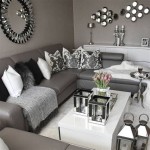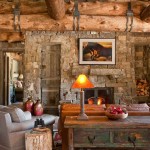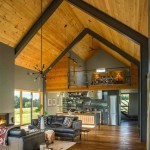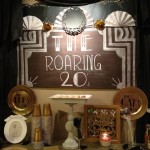Daycare Center Room Decoration
Creating a stimulating and nurturing environment is crucial for a daycare center. Room decoration plays a significant role in achieving this, impacting children's development, engagement, and overall well-being. Thoughtful design choices foster a sense of security and belonging, while also promoting learning and exploration. This article explores key considerations for daycare room decoration, emphasizing the importance of age-appropriateness, safety, and educational value.
Age-Appropriate Design
Different age groups have varying developmental needs and interests. Infants require spaces that prioritize sensory exploration and comfort, while toddlers benefit from areas designed for active play and gross motor skill development. Preschoolers, on the other hand, appreciate spaces that encourage imaginative play, social interaction, and pre-academic learning. Decorating rooms with age-appropriate themes, furniture, and learning materials is essential for creating an environment that caters to each child's specific stage of development.
For infants, soft textures, calming colors, and mobiles featuring simple shapes and contrasting patterns are ideal. Toddlers thrive in environments with soft play areas, low climbing structures, and accessible toy storage. Preschoolers benefit from designated areas for dramatic play, art activities, and quiet reading corners. Thematic decorations, such as a jungle theme or an ocean theme, can add an element of fun and spark children's imaginations.
Safety First
Safety is paramount in any daycare setting. Room decoration must prioritize the well-being of children by minimizing hazards and ensuring a secure environment. Furniture should be sturdy and age-appropriate, with rounded edges and no sharp corners. Wall decorations should be securely fastened to prevent them from falling and posing a risk to children. Electrical outlets should be covered, and cords should be managed carefully to prevent tripping hazards. Flooring should be non-slip and easy to clean. Regular safety inspections are crucial to identify and address any potential risks.
Furthermore, materials used in daycare decorations should be non-toxic and free of harmful chemicals. Paints, adhesives, and other materials should comply with safety standards for children's products. It's also essential to consider allergies and sensitivities when selecting materials, opting for hypoallergenic and easily cleanable options. Maintaining a clean and organized space is also crucial for safety, reducing the risk of accidents and the spread of germs.
Educational Value
Daycare environments should be viewed as extensions of the learning process. Room decoration can play a significant role in enriching children's learning experiences. Incorporating educational elements into the decor can stimulate cognitive development, language skills, and creativity. Walls can be adorned with educational posters featuring letters, numbers, shapes, and colors. Interactive learning centers can be created with age-appropriate toys and materials that encourage exploration and discovery.
Furthermore, the use of natural light and incorporating elements of nature into the decor can enhance children's well-being and connection to the environment. Plants, natural materials, and images of nature can create a calming and stimulating atmosphere. Displaying children's artwork and projects fosters a sense of pride and accomplishment, further encouraging creative expression. Creating a dedicated reading corner with a variety of books can promote literacy and a love of reading.
Creating a Sense of Belonging
A daycare center should feel like a home away from home for children. Decorating rooms with warm and inviting colors, comfortable furnishings, and personal touches can create a sense of belonging and security. Displaying children's names and photos can personalize the space and help them feel recognized and valued. Creating designated areas for individual and group activities can foster a sense of community and cooperation.
Incorporating cultural diversity into the decor can also create a more inclusive and welcoming environment. Displaying artwork, books, and other materials that represent different cultures can expose children to diverse perspectives and promote understanding and acceptance. Music, storytelling, and other cultural activities can further enrich the daycare experience and create a sense of shared identity.
Organization and Functionality
Effective room organization is essential for a functional and efficient daycare environment. Clear pathways, designated areas for different activities, and accessible storage solutions are crucial for maintaining order and minimizing clutter. Well-organized spaces promote smooth transitions between activities and reduce distractions, allowing children to focus and engage more effectively with their surroundings. Labeled storage bins and shelves help children learn organizational skills and contribute to a tidier environment.
Flexible furniture arrangements can adapt to different activities and group sizes, maximizing the use of space. Mobile dividers and storage units can create separate areas for different age groups or activities, providing flexibility and ensuring a conducive learning environment. Regular decluttering and cleaning routines are essential for maintaining a functional and hygienic daycare space.

Daycare Ideas Interior Design Inspiration For Your Childcare Center Decor Setup

404 Not Found Daycare Decor Setup Design

Daycare Ideas Interior Design Inspiration For Your Childcare Center

Daycare Design Ideas S Remodel And Decor
Daycare Ideas Interior Design Inspiration For Your Childcare Center

How To Decorate A Daycare Center Procare Solutions

How To Decorate A Daycare Center Procare Solutions

Childcare Design Eibele

Daycare Ideas Interior Design Inspiration For Your Childcare Center

1 Ultimate Guide For The Best Childcare Design
Related Posts







